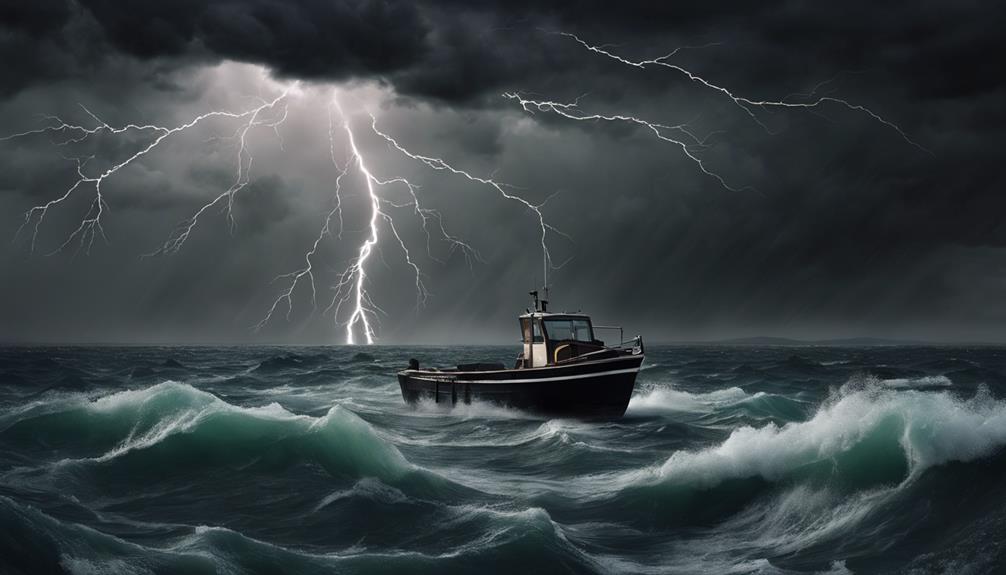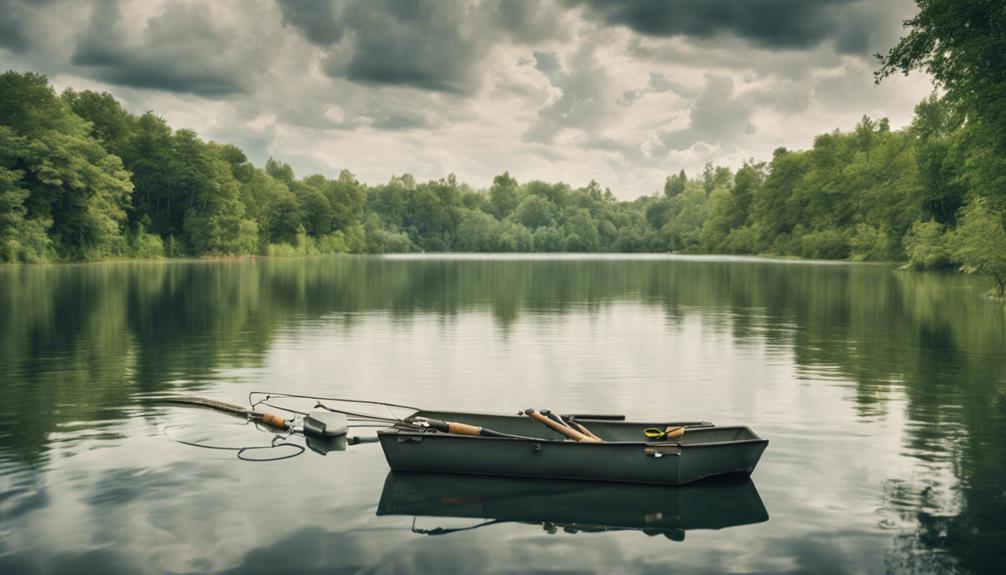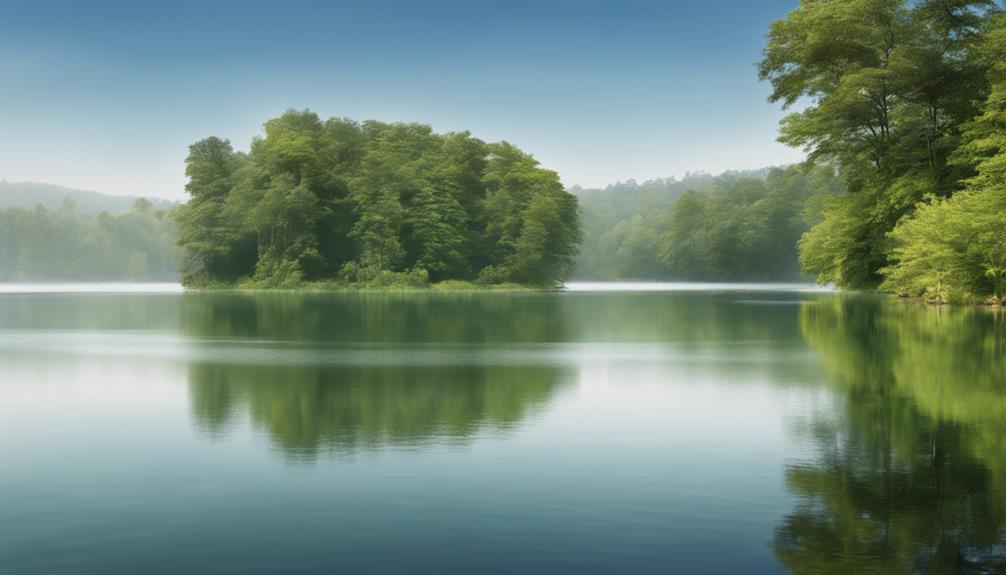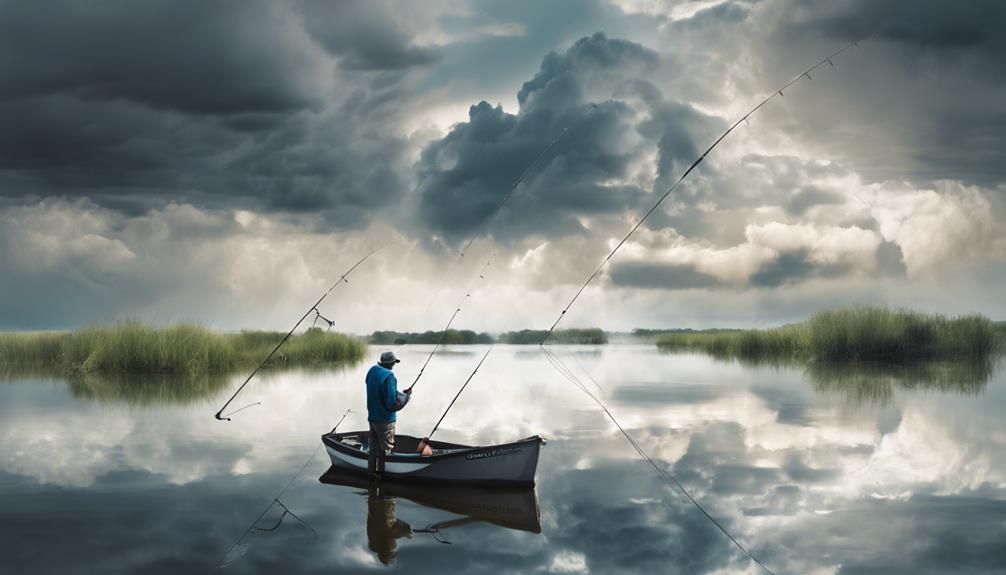Master the 7 best weather tips for novice anglers: understand weather patterns, check wind direction to locate fish, monitor barometric pressure changes, utilize cloud cover for stealth, adapt to temperature shifts, gear up for rain, and prioritize safety during storms. Enhance fishing success and safety with these crucial weather insights.
Importance of Weather Awareness
Understanding weather patterns is crucial for amateur fishermen to ensure a safe and successful fishing trip. Weather conditions play a significant role in determining fishing success. By being aware of the weather forecast and how it impacts fishing, you can make informed decisions that will ultimately lead to a more fruitful fishing experience.
Weather conditions such as temperature, barometric pressure, wind, and precipitation all influence fish behavior. For example, a sudden drop in barometric pressure often triggers increased fish activity, making it an ideal time to fish. On the other hand, high winds can make casting difficult and disrupt the feeding patterns of fish. By paying attention to these factors, you can plan your fishing trips more effectively.
Monitoring weather patterns before heading out to fish is essential. Check local forecasts, including information on temperature changes, wind speed and direction, and any potential storms. Understanding how these conditions can affect the water temperature and fish movement will help you choose the best times and locations to fish. Additionally, being prepared for sudden weather changes can ensure your safety while out on the water.
Understanding Wind Patterns
When planning your fishing trip, take into account the impact of wind patterns on fish behavior and your overall fishing experience. Wind direction plays a crucial role in determining the movement of fish. In general, fish tend to swim against the wind, as they can sense that prey is more likely to be carried towards them. Therefore, when the wind is blowing towards the shore, fish are more likely to be found closer to the shore as well. On the other hand, when the wind is blowing away from the shore, fish may be more dispersed throughout the water. Understanding wind patterns can help you strategically position yourself to increase your chances of catching fish.
Moreover, wind patterns can also affect tidal currents, which are another important factor in fishing. When the wind is blowing in the same direction as the tide, it can strengthen the current, making it more challenging to control your bait or lure. Conversely, when the wind is blowing against the tide, it can weaken the current, providing a more favorable fishing environment.
Monitoring Barometric Pressure
To optimize your fishing success, consider the impact of barometric pressure by monitoring its fluctuations before heading out on your fishing expedition. Barometric pressure, also known as atmospheric pressure, influences fish behavior and can be a key indicator of the best times to fish. Fish are sensitive to pressure changes, and understanding these fluctuations can significantly improve your chances of a successful catch.
When the barometric pressure is high, fish tend to move towards the bottom of the water body, becoming less active and feeding less. On the other hand, low barometric pressure often triggers fish to move to shallower waters, increasing their activity levels and making them more likely to feed. Monitoring these pressure changes can help you anticipate where the fish will be located and adjust your fishing techniques accordingly.
To track barometric pressure, you can use a barometer or check online weather sources that provide this information. Look for trends in pressure changes leading up to your fishing trip. A falling barometer indicates that a weather system may be approaching, which can often lead to increased fish activity. Conversely, a rising barometer suggests stable weather conditions, which may result in more challenging fishing conditions.
Effect of Cloud Cover on Fishing
Cloud cover plays a significant role in influencing fish behavior and can impact your fishing success. When considering cloud cover for fishing, there are several key points to keep in mind:
- Increased Stealth: Cloud cover provides a natural camouflage, making it harder for fish to spot you, giving you an advantage in sneaking up on your catch.
- Lower Visibility: While cloud cover can make it harder for fish to see you, it can also reduce your visibility of the fish, requiring a more strategic approach to locate them.
- Temperature Regulation: Cloud cover can help regulate water temperatures by blocking out the sun's direct rays, which can be beneficial for certain fish species.
- Decreased Solar Influence: Fish that are sensitive to light may become more active under cloud cover, as the reduced sunlight can make them feel more secure and encourage them to feed.
- Potential Barometric Pressure Changes: Cloud cover can be associated with weather systems that bring changes in barometric pressure, which may affect fish behavior, leading to either increased or decreased feeding activity.
Understanding the effects of cloud cover on fish behavior can significantly improve your fishing outcomes. Be mindful of these factors when planning your next fishing trip.
Impact of Temperature Changes
Temperature changes have a direct impact on fish behavior and can significantly influence your fishing experience. To adapt to these changes effectively, proper gear preparation is essential. When the water temperature fluctuates, fish tend to move to different depths or locations in search of suitable conditions. Understanding these behaviors can help you adjust your fishing techniques accordingly.
Before heading out, check the water temperature of the fishing spot. Warmer temperatures often lead to increased fish activity, while colder waters may result in fish being less active. For colder temperatures, consider using slower bait presentation to entice fish that may be less willing to exert energy. In contrast, during warmer temperatures, faster presentations can mimic the behavior of prey fish, attracting predators.
It's crucial to have a variety of gear options ready for different temperature scenarios. For instance, in colder waters, having smaller baits that move slowly can be more effective. On the other hand, warmer waters might require larger baits that move quickly to trigger a strike. By being prepared with a range of gear choices, you can optimize your chances of success regardless of temperature fluctuations.
Fishing During Rainfall
When fishing during rainfall, be mindful of how precipitation can impact fish behavior and adjust your strategies accordingly. Rainfall can either enhance or hinder your fishing experience, depending on how you approach it. Here are some key tips to help you make the most out of fishing in the rain:
- Rain gear essentials: Invest in quality rain gear, including a waterproof jacket, pants, and boots to keep yourself dry and comfortable throughout your fishing trip.
- Fishing technique: During light rain, fish tend to be more active near the surface. Use topwater lures or bait to entice them. In heavy rain, fish may move to deeper waters, so consider adjusting your bait and casting technique accordingly.
- Finding shelter: Look for natural shelters like overhanging trees, bridges, or rock formations to shield yourself from the rain. This will help you stay dry and focused on fishing.
- Staying dry: Wet clothes can lead to discomfort and even hypothermia. Pack extra dry clothes in a waterproof bag to change into if needed.
- Be cautious of lightning: If there's thunder or lightning, seek shelter immediately. Fishing in open water during a thunderstorm is extremely dangerous.
Safety Precautions in Stormy Weather

In stormy weather conditions, prioritize safety by adhering to crucial precautions to safeguard yourself and others during your fishing expedition. Proper boat preparation is essential to ensure your safety during stormy weather. Before heading out, double-check that your boat is in good condition, with no leaks and that all safety equipment such as life jackets, flares, and a first aid kit are onboard and easily accessible. It's also advisable to have a reliable communication device like a VHF radio or a waterproof mobile phone.
Emergency protocols should be established and communicated before embarking on your fishing trip. Ensure everyone on board knows where the emergency equipment is located and how to use it. In the event of a sudden storm, instruct everyone to don their life jackets immediately. Secure all loose items on the boat to prevent them from becoming dangerous projectiles in high winds.
If lightning is present, it's crucial to head back to shore as quickly as possible. Avoid open water and seek shelter. If you can't return to land, crouch down in the center of the boat to minimize your risk of being struck. Remember, safety should always be your top priority when fishing in stormy weather.
Frequently Asked Questions
Can Moon Phases Affect Fishing Success?
Yes, moon phases can indeed affect fishing success. The lunar influence plays a significant role in fish behavior, impacting their feeding habits and activity levels.
There's a celestial connection between moon phases and fishing patterns, with certain phases correlating to better fishing opportunities. Understanding how moon phases affect fish behavior can help you plan your fishing trips more strategically and increase your chances of a successful catch.
How Do Tides Influence Fishing Conditions?
When it comes to fishing conditions, tides play a crucial role. Understanding tide patterns can help you choose the best fishing spots.
Lunar influence affects tide charts, impacting tidal currents. By studying these factors, you can adapt your fishing techniques accordingly.
Stay informed about tide movements to maximize your chances of success on the water.
Is There a Specific Time of Day for Best Fishing?
For optimal fishing success, consider factors like morning versus evening and solar versus lunar influences. Fish tend to be more active during low light conditions, which often occurs during dawn and dusk.
Solar-powered fish may be more active during daylight hours, while lunar-driven activity can peak during moonrise and moonset. Experiment with different times of day to see when the fish are most active in your fishing spot.
What Role Does Air Pressure Play in Fishing?
Air pressure fluctuations impact fish behavior, affecting their feeding patterns. Fish may be more active during stable pressure conditions. When the pressure changes, they may become less active, making them harder to catch.
Adjust your casting techniques based on atmospheric conditions to attract fish. Understanding how air pressure influences fish behavior can enhance your fishing success.
Should I Adjust Bait Presentation in Different Weather?
When adjusting bait presentation in different weather conditions, consider the water temperature.
In colder waters, fish tend to be less active, so using slower-moving baits or live bait can be more effective.
On the other hand, in warmer waters, fish may be more active, so using faster-moving lures or brightly colored baits can attract their attention.
Understanding how weather impacts water temperature can help you choose the right bait for a successful fishing trip.
Conclusion
In conclusion, by following these weather tips for amateur fishermen, you can significantly improve your chances of having a successful fishing trip.
Understanding wind patterns, monitoring barometric pressure, and considering the impact of cloud cover, temperature changes, and rainfall can all play a crucial role in your fishing experience.
Remember to prioritize safety precautions in stormy weather to ensure a safe and enjoyable outing.
Happy fishing!



